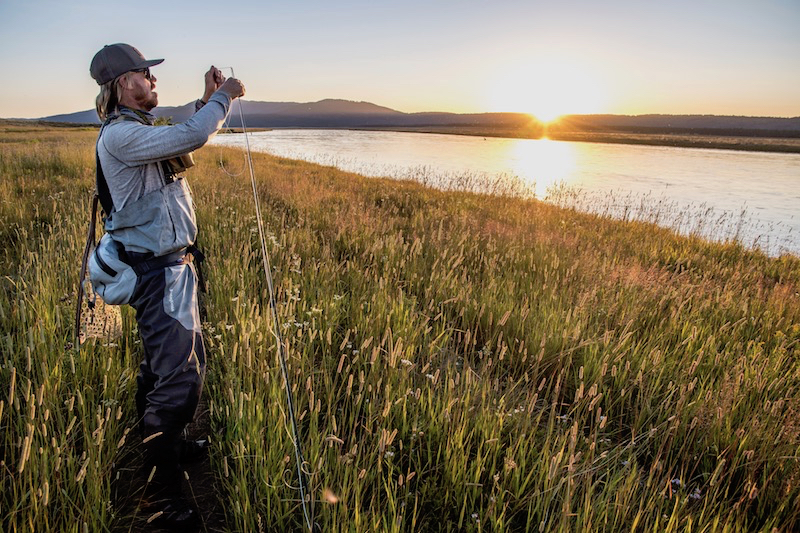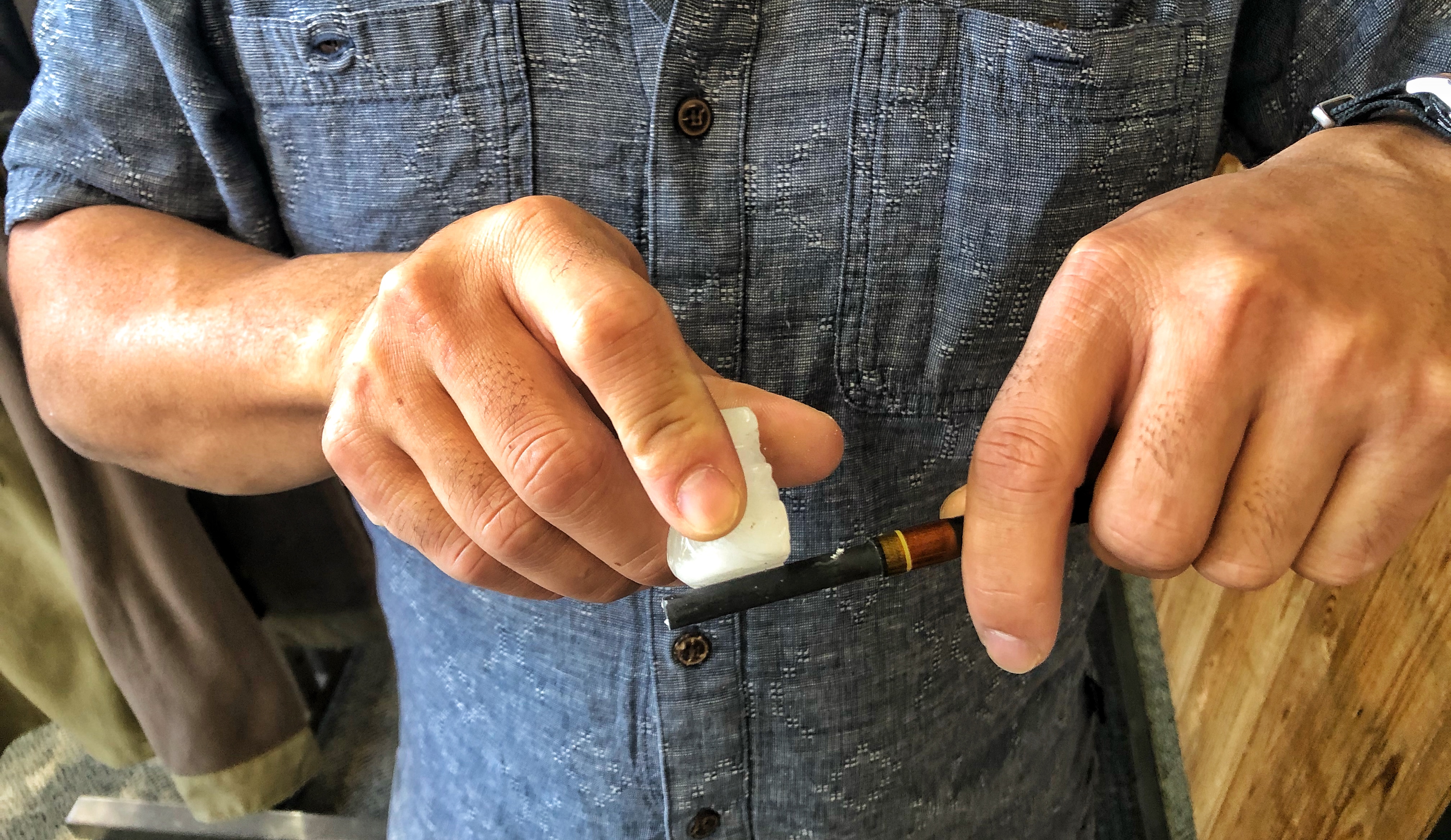Posted by Steve Schmidt on Oct 5th 2020
With the onset of the pandemic many fly-fishing companies have had their factories, products, and productions compromised. Rod companies and their repair departments in particular. At this time companies are prioritizing the creation of new products over repairs to meet consumer demand. Something's got to give, and in this instance it is the repair departments. Depending on the manufacturer repairs may take upwards of 12 weeks. YIKES! .So, long story short… don’t break your rod! Take good care of them to avoid having to send them in for lengthy, costly and often avoidable repairs. To that endeavor, here are some ideas and suggestions for keeping your gear in fish mode and not off to the repair department regardless of what’s going on in the world today. So, let’s start at the beginning with simply stringing up a fly rod.
Stringing Up A Fly Rod:
Believe it or not this procedure leads to many broken rod tips, especially in the winter months. To say the least it’s not a good way to begin your day. Here are some tips that will help keep your favorite rod in use by simply stringing your fly rod up properly.
A parking lot or gravel pull-off is where many of our fishing days begin, and unfortunately they aren’t ideal places for the delicate and precarious endeavor of stringing up a rod. Between the abrasiveness of dirt, the guillotine potential of car doors, and innocent bystanders milling about, beware the parking lot and their many trappings!
Placing your rod in the dirt, gravel or on pavement while running the line through the guides, or any time for that matter, takes a toll on your valuable fly-fishing gear. It not only scratches, dents and dings the rod and reel, but dirt and dust will settle onto and into the reel and fly line affecting their performance and longevity.

If you must string your rod up in the parking area try placing it on something other than the ground before doing so. Putting your reel in a boot, on a wader bag, or even a floor mat removed from your car, will give you and your fly fishing gear a better chance of making it through the day in good condition. I personally prefer and suggest waiting to put your rod together until you find a nice streamside patch of grass to perform your pre-fishing ritual. Away from cars and asphalt is a far safer place to string up your rod. From this vantage point you can also watch the water, look for risers, see if there is anything hatching and select the first fly of the day.
Wherever your soft landing pad may be to string the line through the guides, there is a recommended procedure. First, pull enough line off the reel so you have enough to string up your rod. Avoid threading your guides with the leader or tippet first! Instead, double over a small part of the fly line, (the part actually doing the threading) and work that portion through the guides of the rod. Doing it this way makes the fly line easier to handle, especially when your hands are cold. Once you get the line through the guides, you should finish pulling the remaining line and leader out the tip with the rod straight. Holding the rod upright, then grabbing the rod and line forcing a bend in the tip section can and often does lead to a snapped tip section should a bulky knot suddenly hang up on one of the guides. Keeping the rod straight when pulling the last bit of line and leader through the guides will keep this from happening.
The Windshield Wiper Trick:

Many of the rods brought in for repair to the shop have been smashed, or run-over, because they were left in harms way. In most instances these incidents could have been easily avoided. Part of the problem is where to put your rod once you've put it together. Here is one of the best trips I've ever been given if you are by a vehicle while getting ready to go wet a line.
If I assemble my rod and attach the reel to it before heading to the river, I’m going to have to put it somewhere while I gather my gear, put my waders on or more importantly finish the last of my coffee. Leaning it up against the car with the butt and reel on the ground or placing it on top of the car are not good options and should be avoided. A rod can easily fall or be blown from those perches. At the end of the day, many of us have driven off with the rod still in those precarious places and that rarely turns out well! So, the best option for safe rod storage is to lift up the windshield wiper and slide the reel, cork or butt section of your rod under it. This tensioned position holds your rod in place, while keeping the delicate tip section up and out of the way of dog, foot and door! The windshield of your car and the wiper blade can act as an extra set of hands, and gentle ones at that. If you should by chance drive off with the rod in the position, we'll you probably shouldn't be driving, but that's another story.
Preventing Cracked Ferrules:
This little tidbit of helpful information was prompted by a customer who recently brought their rod in with a cracked ferrule; rod junction. Fortunately it was a small internal fracture and the rod could still be fished, and sent in to be repaired at a more convenient time. This isn’t an uncommon issue, and rarely is it a manufacturer's defect. It’s a user error most of the time.
This occurs when a ferrule comes loose while the rod is being used. Failing to check periodically to see if the rod junction is snug when fishing, especially throughout a long day on the water, can lead to a ferrule working its way loose. It only takes a little bit of play in a ferrule to cause the upper portion of the junction to crack while you are casting, or playing a fish. In extreme cases it can lead to the rod snapping in half.

Long days on the water are when this usually occurs, or when you are fishing consecutive days without breaking a fly rod down. For those who use a “Rod Vault" of some kind this can be especially problematic, particularly when temperatures range at both ends of the spectrum on a given day. Extreme heat with a drastic cooling can change tensions and connections on pretty much any piece of gear. Your rod, riding on the roof is experiencing extreme heat at times, on that summer trip to the Green, or while hanging out at your favorite bar and grill! Maintaining a rod's ferrules, and taking the time to check that the ferrule junctions are snug while fishing will ensure this doesn't happen.
Another important suggestion that all of us at the shop practice, is putting paraffin on the plug end of the ferrule periodically. We carry ferrule wax, or you can purchase paraffin in bulk quantity at the store quite cheaply. After a fishing trip, or at the end of the season, simply rub a small amount of paraffin on the end of each section piece, then rub off any excess. This will not only help your rod stay together when fishing. This simple routine will also ensure that your ferrules stay in good shape for the life of your rod. Having done this on a rod I’ve now fished for 40 years we area testament.
Have a Routine:
One last little piece of advice, have a routine. How you manage your equipment and fishing gear will help keep you from forgetting what you need and lead to your rods and reels being safe from those moments of absentmindedness. I not only keep my stuff stored consistently in the same places: milk crates, rod tubes, gear bags, vest, pack, etc, but when I get to where I’m going, I have a purposeful method to my madness so that my gear stays safe and out of harm’s way. I encourage you to do the same. It will pay off, literally.
I hope you found this helpful. It’s important that you get the most from your time on the water and the gear you fish with is a critical part of your enjoyment. Keeping your favorite fly-fishing equipment in good working order is something we encourage and hope to help you with since there is never a good time to have equipment failure. For those who purchase their gear from us, we’re happy to help clean your fly lines, put ferrule wax on your rods and keep your reels in tip top shape. If they do need to go back for repair, we can assist with that also. Thanks for chiming in. Good fishing to you!

